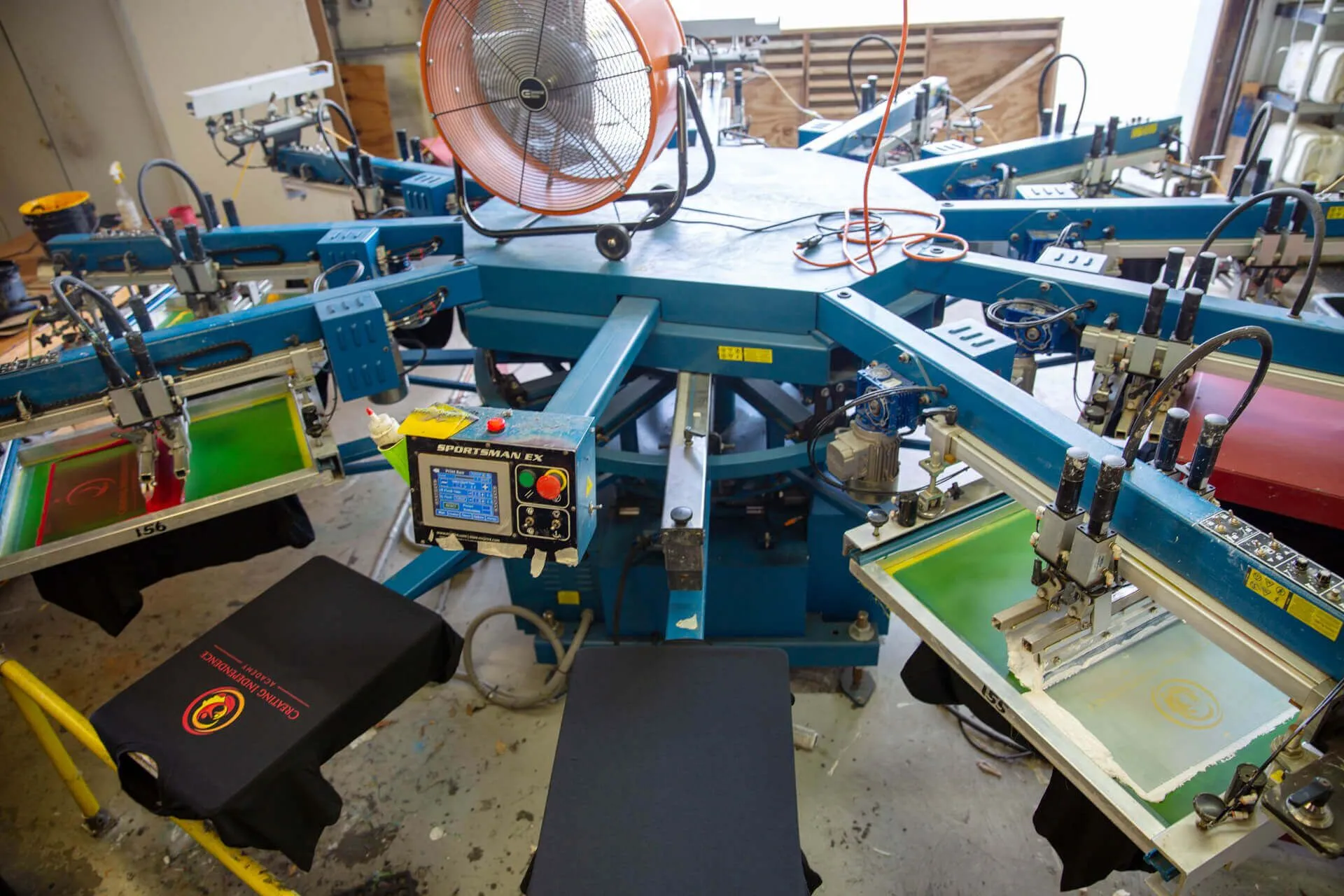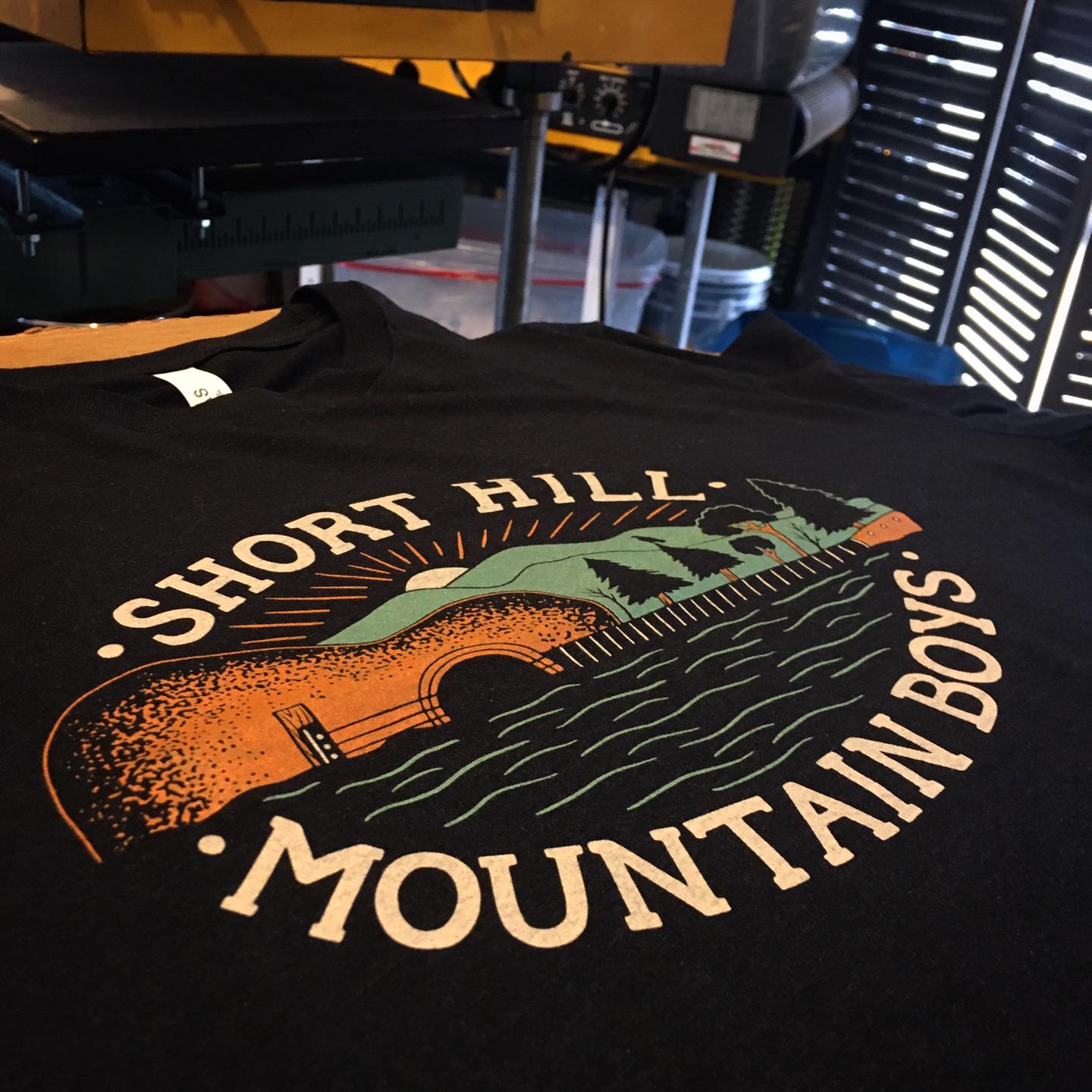Fast Turnaround Custom Screen Printing for Events
Fast Turnaround Custom Screen Printing for Events
Blog Article
Screen Printing Uncovered: Everything You Need to Learn About Tee Shirt and Garment Printing Techniques
If you have actually ever before asked yourself how those vibrant styles wind up on your favorite t-shirts, you remain in the ideal location. Display printing is a fascinating method that integrates art with method, using limitless possibilities for creative thinking. Recognizing the fundamentals, from devices to ink options, can considerably affect your outcomes. Ready to check out the important components that make display printing an art kind? Allow's discover the details that can raise your projects.
The Fundamentals of Screen Printing: Exactly How It Works
When you dive right into screen printing, you'll find it's both an art and a scientific research. At its core, screen printing involves producing a stencil, or screen, that enables ink to go through just in specific areas (screen printing kit). You start by picking your style and preparing your display with a light-sensitive solution. When you reveal this emulsion to light, it hardens, leaving your design as an unfavorable space.
Setting the display over the fabric, then make use of a squeegee to press ink through the screen onto the garment. Each step is crucial, and understanding them will elevate your display printing skills, changing easy garments right into distinct, meaningful pieces.
Kinds Of Screen Printing Methods
As soon as you understand the essentials of display printing, it's time to explore the numerous methods that can raise your designs. One prominent technique is traditional display printing, where ink is pushed via a stenciled screen. This method is terrific for strong, dynamic colors. There's water-based ink printing, which supplies a softer feeling and is environmentally friendly, but it calls for a different technique to healing.
One more alternative is plastisol printing, understood for its sturdiness and brilliant colors, making it a preferred for lots of brand names. Experiment with halftone printing to produce slope impacts and complex layouts.
Vital Equipment for Screen Printing
To attain stunning results in screen printing, having the ideal equipment is fundamental. Initially, you'll require a strong screen printing structure, which holds the mesh that moves your style onto the garment. Next off, buy high-quality mops; these are crucial for applying ink equally throughout the screen. You'll likewise require a good exposure system to create your displays, along with a washout booth for cleansing them after use. A reliable warmth resource, like a conveyor clothes dryer or heat press, is critical for healing your prints to assure durability. Don't neglect an appropriate workspace, outfitted with tables and storage space for your supplies. Finally, protective equipment, such as handwear covers and masks, will certainly keep you safe from chemicals and inks. With the right devices, you'll be well on your way to creating professional-quality prints.
Selecting the Right Inks and Products
When selecting inks and materials for screen printing, you need to take into account the type of ink that functions ideal for your job. Think of material compatibility to ensure your layouts look excellent and last long. Check out eco-friendly ink options to make your printing process much more sustainable.
Sorts Of Screen Inks
Selecting the best screen ink is crucial for attaining lively, sturdy prints that fulfill your job's needs. There are numerous kinds of screen inks to check out. Specialty inks, such as metallic or glow-in-the-dark, can include one-of-a-kind impacts to your designs.

Fabric Compatibility Considerations
Understanding material compatibility is important for attaining top notch screen prints, particularly because different products react distinctively to various inks. When choosing inks, think about the material type-- cotton, polyester, or blends. For cotton, water-based inks function well, providing soft qualities and breathability. Polyester, on the various other hand, often needs plastisol inks for far better bond and vivid colors. If you're printing on blends, you may require to utilize a combination of both types. Always check your inks on sample textile to guarantee they stick effectively and preserve color honesty. In addition, bear in mind that material weight and structure can influence the final outcome, so selecting the right ink and material combo is important for your task's success.
Eco-Friendly Ink Options
Environment-friendly inks are ending up being a preferred selection for screen printers who intend to lessen their ecological impact while maintaining high quality. When picking inks, think about water-based inks, which are less hazardous and simpler to tidy up contrasted to traditional solvents. These inks bond well with textiles, supplying vibrant results without toxic chemicals. You might likewise check out eco-solvent inks that make use of fewer unstable natural compounds (VOCs), making them a much safer option for both your wellness and the planet.
Additionally, try to find inks made from renewable energies, such as soy or vegetable-based choices. By choosing the appropriate inks and products, you'll not just create spectacular styles yet also contribute to a more lasting printing process. Make the button, and your prints will mirror your dedication to the environment!
Preparing Your Design for Screen Printing

Submit Format Needs
To ensure your style looks vivid and sharp on fabric, you'll need to pay close attention to file format needs for screen printing. Begin with vector data like AI or EPS, as they can be scaled without shedding top quality. If you use raster pictures, go with high-resolution documents, such as TIFF or PNG, preferably at 300 DPI. Prevent using JPEGs, as they can lose clarity when resized. Likewise, make certain your layout has a transparent background to protect against undesirable white edges on your prints. Ultimately, keep color settings in mind; CMYK is standard for screen printing, so convert your RGB creates as necessary. By adhering to these guidelines, you'll set your artwork up for an effective print.
Color Separation Methods
Shade splitting up is a necessary action in preparing your style for screen printing, and understanding it can greatly enhance your print top quality. You'll need to damage your layout into private shades, as each color calls for a separate screen during printing. Begin by recognizing all the colors in your style and produce layers each. You can use software like Adobe Photoshop or Illustrator to separate and different shades effectively. Be specific to conserve each layer as a different data, usually in a layout like TIFF or PSD. This precision not only assures accurate shade depiction however also enhances the printing process. By paying focus to color splitting up, you'll accomplish vivid and expert lead to your screen-printed garments.
Resolution and Dimension
Achieving the very best cause display printing begins with guaranteeing your design has the appropriate resolution and dimension. Preferably, your art work must be at the very least 300 DPI (dots per inch) for sharp, clear prints. If you utilize reduced resolution, your end product might look pixelated and amateur.
When it pertains to size, consider the dimensions of your print area. Style your artwork to match the final print size, ideally producing it in the actual dimensions you'll be publishing. In this manner, you'll avoid any type of unforeseen scaling concerns.
Always examine weblink your layout in both vector and raster layouts. Vector graphics can be scaled without shedding high quality, making them ideal for display printing. Preparing properly will ensure your layout looks impressive on every garment!
Step-by-Step Display Printing Process
Screen printing is a vibrant process that allows you to produce vibrant styles on numerous surface areas. To get begun, you'll need a display, solution, and your picked ink.
Pour ink onto the display and utilize a squeegee to press the ink via the stencil onto the material. Raise the display very carefully and allow the print completely dry. You've effectively screen published your layout.
Tips for Effective Display Printing Projects
While you're diving into your screen printing projects, bear in mind that prep work is vital to success. Begin by collecting all your products-- inks, mops, displays, and garments. A clean office aids avoid undesirable errors, so clean up before you begin.
Following, validate your artwork is high-resolution and properly sized for your garment. Check your screen for appropriate exposure and clean it extensively to avoid spots. When blending your inks, adhere to the maker's standards to attain the right uniformity.
Throughout printing, use also pressure with your squeegee for regular outcomes. Don't rush; take your time to confirm each print meets your criteria. After printing, let your garments dry entirely prior to handling or packaging them.
Last but not least, always maintain a sample of your work for future reference. By doing this, you can analyze your progression and improve your techniques in time. Satisfied printing!

Often Asked Concerns
For how long Does It Require To Set up a Display Printing Task?
Establishing a screen printing work typically takes around 30 minutes to an hour. check here You'll prepare the displays, mix inks, and change journalism. The moment differs based upon complexity and experience, so stay arranged!
Can I Print on Various Textile Types Making Use Of the Same Technique?
Yes, you can print on various material kinds utilizing the same method, yet you'll require to adjust your settings and inks. Some textiles soak up ink differently, so experimenting guarantees the very best outcomes for each and every material.
What Prevail Errors to Prevent in Display Printing?
When screen printing, avoid typical mistakes like utilizing the wrong ink, ignoring appropriate exposure times, or missing pre-press checks. Always examine your setup and preserve tidy screens to assure quality results each time.
Exactly How Can I Appropriately Clean and Maintain My Display Printing Equipment?
To effectively tidy and maintain your display printing equipment, you must frequently clean screens with suitable solvents, check mops for wear, and guarantee all devices are saved dust-free and dry. Consistency prevents pricey repair services and enhances efficiency.
Is Screen Printing Environmentally Pleasant Compared to Other Approaches?
Display printing can be extra environmentally pleasant than various other techniques, particularly if you use water-based inks and eco-conscious products. By choosing sustainable products and practices, you decrease waste and reduce your impact on the planet.
Display Printing Uncovered: Every Little Thing You Need to Know Concerning Tee Shirt and Garment Printing Strategies
At its core, display printing entails producing a pattern, or display, that allows ink to pass through just in particular locations. Placement the display over the material, after that utilize a squeegee to press ink via the display onto the garment. One preferred technique is traditional display printing, where ink is pressed with a stenciled display.When picking inks and products for screen printing, you require to take right into account the kind of ink that works finest for your task.
Report this page